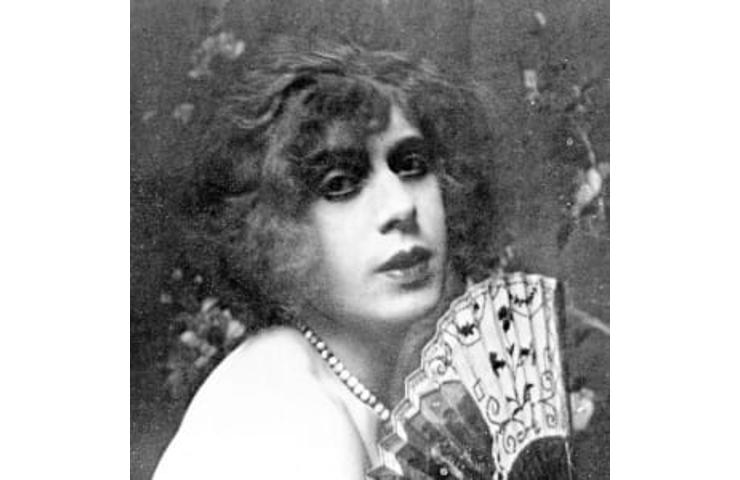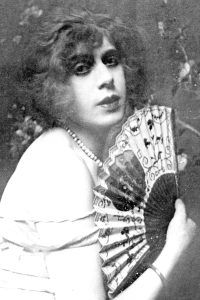No products in the cart.

Painter (1882–1931)
Lili Elbe was a transgender Danish painter who was among the first-ever documented recipients of sex reassignment surgery.
Synopsis
Lili Elbe was born Einar Wegener in Vejle, Denmark in 1882 and moved to Copenhagen to study art at the Royal Danish Academy of Fine Arts as a teenager. After marrying Gerda Gottlieb, Elbe realized her true gender identity and began to live her life as a woman. After undergoing four risky surgical procedures to transform her body from male to female, Elbe died from post-operative complications in Dresden, Germany, just shy of her 49th birthday. The story of her life was made into two books, Man into Woman, and the international bestseller The Danish Girl, as well as the 2015 film of the same name starring Eddie Redmayne.
Early Life, Marriage, and Career
Born on December 28, 1882 in the small fjord-side town of Vejle, Denmark, Einar Mogens Wegener was an artistic and precocious young boy. As a teenager, he traveled to Copenhagen to study art at the Royal Danish Academy of Fine Arts. There, Einar met Gerda Gottlieb and they fell in love and married in 1904 at the young ages of 22 and 19. The two artists enjoyed painting together. While Einar specialized in landscape paintings, Gerda was a successful book and fashion magazine illustrator. In fact, Gerda even asked Einar to sit as her model and don women’s clothing for her art-deco portraits of high-fashion women.
Gerda’s portraits transformed Einar into the beautiful woman he knew he always wanted to be. Through these experiences, Einar began to envision living life as a woman. After traveling through Italy and France, the couple eventually settled in Paris in 1912 and Einar transitioned his public identity to Lili and lived openly as a woman for the last two decades of her life. She chose the surname “Elbe” after the river in Central Europe that flows through Dresden, the location of the last of her sex reassignment operations.
READ OUR REVIEW ON ‘THE DANISH GIRL,’ A FILM INSPIRED BY LILI ELBE’S TRANSGENDER JOURNEY
Sex Reassignment Surgery Recipient
In the 1920s, Elbe learned of the possibility of permanently transforming her body from male to female at the German Institute for Sexual Science in Berlin. Dr. Magnus Hirschfeld founded the clinic in 1919 and coined the term “transsexualism” in 1923 (although some reports indicate that Elbe was the very first sex reassignment surgery recipient, she was not). There she underwent the first of four operations in 1930, a surgical castration procedure. The next three surgeries were conducted in 1930 and 1931 by Dr. Kurt Warnekros at the Dresden Municipal Women’s Clinic and included a penectomy, the transplantation of human ovarian tissue (some reports indicate that Elbe already had rudimentary ovaries in her abdomen and may have been intersex), and a subsequent unspecified surgery some weeks later that involved the insertion of a cannula. These surgeries permitted her to legally change her name and her sex allowing her to receive a passport as Lili Elbe (female).
A New Woman
Elbe described her change as a rebirth into the woman she knew she always was. She was now able to live her life as Lili, however, because she was now legally recognized as a woman, the King of Denmark ruled her marriage to Gerda to be null and void in 1930. The two parted ways amicably and another door opened when an old friend requested her hand in marriage. Elbe was elated and she planned a final surgery that involved a uterus transplant and the construction of an artificial vagina in hopes that this procedure would allow her to have intercourse with her fiancé and eventually become a mother. But this dream would never be realized. Elbe died from paralysis of the heart shortly after at the Women’s Clinic in Dresden while recovering from her final surgery in 1931, just shy of her 49th birthday.
An Inspirational Story
Elbe’s story was published after her death by Ernst Ludwig Harthern-Jacobson (under the pen name Niels Hoyer) who compiled her life history from her personal diaries in accordance with her last wishes. The book, Man into Woman, was first published in 1933 in Danish and German and English editions quickly followed (including reissues of the English version in 1953 and 2004). Man into Woman was one of the first widely-available books about a transgender person’s life and because of this, it was inspirational. In fact, Jan Morris (who chronicled her own gender transition and sex reassignment surgery in the 1975 book Conundrum) notes that she was inspired to pursue surgery to transition her gender after reading Elbe’s story. More recently Elbe’s life inspired The Danish Girl (2000), an international bestselling novel by David Ebershoff, and a major feature film by the same name (2015) starring Eddie Redmayne.



